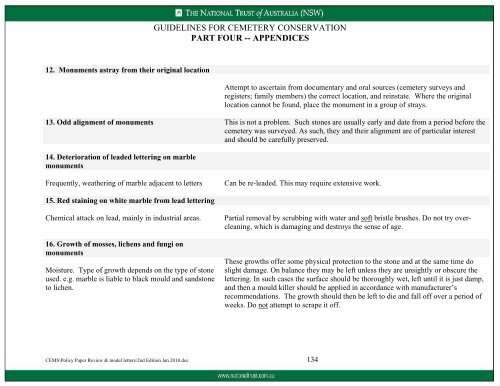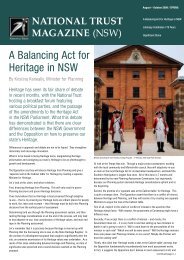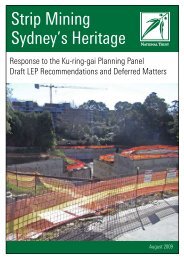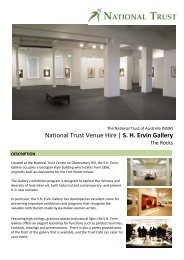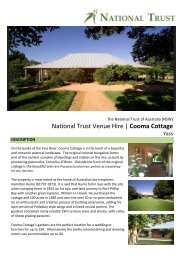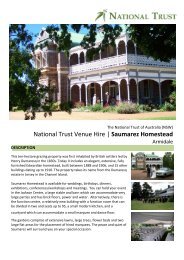Guidelines for Cemetery Conservation - National Trust of Australia
Guidelines for Cemetery Conservation - National Trust of Australia
Guidelines for Cemetery Conservation - National Trust of Australia
You also want an ePaper? Increase the reach of your titles
YUMPU automatically turns print PDFs into web optimized ePapers that Google loves.
GUIDELINES FOR CEMETERY CONSERVATION<br />
PART FOUR -- APPENDICES<br />
12. Monuments astray from their original location<br />
Attempt to ascertain from documentary and oral sources (cemetery surveys and<br />
registers; family members) the correct location, and reinstate. Where the original<br />
location cannot be found, place the monument in a group <strong>of</strong> strays.<br />
13. Odd alignment <strong>of</strong> monuments This is not a problem. Such stones are usually early and date from a period be<strong>for</strong>e the<br />
cemetery was surveyed. As such, they and their alignment are <strong>of</strong> particular interest<br />
and should be carefully preserved.<br />
14. Deterioration <strong>of</strong> leaded lettering on marble<br />
monuments<br />
Frequently, weathering <strong>of</strong> marble adjacent to letters<br />
Can be re-leaded. This may require extensive work.<br />
15. Red staining on white marble from lead lettering<br />
Chemical attack on lead, mainly in industrial areas.<br />
16. Growth <strong>of</strong> mosses, lichens and fungi on<br />
monuments<br />
Moisture. Type <strong>of</strong> growth depends on the type <strong>of</strong> stone<br />
used. e.g. marble is liable to black mould and sandstone<br />
to lichen.<br />
Partial removal by scrubbing with water and s<strong>of</strong>t bristle brushes. Do not try overcleaning,<br />
which is damaging and destroys the sense <strong>of</strong> age.<br />
These growths <strong>of</strong>fer some physical protection to the stone and at the same time do<br />
slight damage. On balance they may be left unless they are unsightly or obscure the<br />
lettering. In such cases the surface should be thoroughly wet, left until it is just damp,<br />
and then a mould killer should be applied in accordance with manufacturer’s<br />
recommendations. The growth should then be left to die and fall <strong>of</strong>f over a period <strong>of</strong><br />
weeks. Do not attempt to scrape it <strong>of</strong>f.<br />
CEMS\Policy Paper Review & model letters\2nd Edition Jan 2010.doc 134


